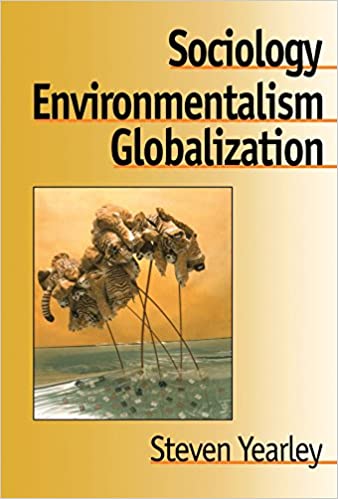The Violence of the Green Revolution: Third World Agriculture, Ecology and Politics, Vandana Shiva, Zed Books, 1991, pp. 264, ISBN: 0-86232-964-7
The Green Revolution is a misleading name given to a systemic change in agricultural production in the Third World. Touted as the key to solving world hunger and preventing agrarian conflict, the Green Revolution promised to deliver these goals by introducing high yielding variety seeds, pesticides, fertilizers and increasing agricultural productivity. In 1970, Norman Borlaug was awarded the Nobel Peace Prize for this discovery. In the words of the Nobel Committee, “this kind of grains…speed economic growth in general in the developing countries.”
In her book, noted ecologist Vandana Shiva presents the other side of the introduction of the Green Revolution’s technology in India in the late 1980s. It details the ensuing ecological and social breakdown that led to the impoverishment of India’s soil and the deaths of thousands in violent ethnic clashes in Punjab. In trying to conquer nature, promoters of the systemic shift in India’s agricultural practices tore apart the social fabric that constituted it and fanned the fires of hatred.
Shiva traces the origins of the Green Revolution in India to the early 1950s when India was trying to develop self-reliant and ecological alternatives for the regeneration of its agriculture to address its food shortages. Newly independent, and devastated by the Second World War and the Partition with Pakistan, India focused its attention on preventing hunger. One of the first things the President of the Constituent Assembly Rajendra Prasad did upon taking office was to raise the flag at the Indian Council of Agricultural Research and declare it one of the most important institutions in the forging of a new nation.
At the same time, Shiva shows that the American model of agriculture was consolidating, developed by NGOs and foundations to solve the perceived problems of others. Specifically, the Ford Foundation, the Rockefeller Foundation, and USAID funded, developed, promoted and implemented specific measures and created the technologies that came to constitute the Green Revolution. They installed their researchers at the top of Indian agricultural research institutes, funded Indian students to study in America, and lobbied World Bank to extend credit lines to purchase capital intensive inputs, such as the rice seeds from the International Rice Research Institute in the Philippines. The graduates of these programs were to become future leaders and those who would implement the change. In the meantime, the foundations established themselves in villages in which they sought to implement their development projects, which led to the “adoption breakthrough,” which completely replaced “the indigenous, bottom-up, organic-based” Indian agriculture.
Moreover, these technocrats viewed Indian agriculture as constrained by unproductive practices of the peasantry and limited by nature. Here, Shiva contrasts her ideas about agroecology with the commercialized nature of the American endeavour. She notes that what was perceived as unproductive was actually sustainable and dictated by nature’s processes. Chemical fertilizers, pesticides and irrigation technology replaced readily available no-cost inputs and ushered Indian peasants into an era of dependency on the markets and foundations.
These “miracle seeds,” coming from the Rockefeller Foundation funded institutes, were to provide abundance and rid India of hunger. The proliferation of these technocratic institutes with imported knowledge also reflected the centralization and universalization of approaches to solving particular local “issues.” Despite protests by the indigenous people who saw their knowledge-systems eradicated, biodiverse crops were replaced by high yielding monocultural varieties with narrow genetic bases. The focus was to provide for internationally marketable commodities that would plug the local communities into the broader supplies network, with the belief that the market will lift peasants out of poverty while still providing enough food. Naturally, this led to a higher intensity in the use of scarce resources such as water, while at the same time generating demand for non-renewable resources necessary in creating inputs such as fertilizers and pesticides. It then further led to, as Shiva states, “diseased soils, pest-infested crops, waterlogged deserts and indebted and discontented farmers.” Likewise, these seeds focus on yielding tradeable crops that supplant previous seeds that also produced fodder for animals, thereby actually creating scarcity not only for humans but animals as well. In other words, agricultural productivity was increased at the expense of biodiversity, soil health, and social relations.
Shiva’s argument is supported by strong and incontrovertible empirical evidence that suggests that the rate of growth of aggregate crop production was higher before the Green Revolution. As she shows, the name “high yielding varieties” is a misnomer as it fails to account for the required input that makes it so. In their absence, the “miracle seeds” perform worse than the indigenous ones. Besides, as Shiva shows, indigenous seeds could have higher yields than the “miracle seeds” given the right management. Nonetheless, these “miracle seeds” led to soil infertility and a decrease in crop yields, which impacted farmers who were amassing ever more debt due to the new input requirements. Their economic hardships led to their organized opposition to the Green Revolution.
The Green Revolution opened the door to violence against different interest groups. This conclusion is markedly different from standard interpretations of the conflict that swept through Punjab in the 1980s and the 1990s, which overlooked its ecological roots and focused solely on the religious differences between Hindus and Sikhs. Secessionist Sikhs were waging war against the Indian Congress Party, which wanted to crush their political organization, the Akali Dal, militarily. Shiva sees the central government’s opposition to the Akali Dal as their attempt to subdue peasants who organized under its banner in response to the central government’s agricultural policies implementing the Green Revolution.
Shiva focuses solely on the impacts the Green Revolution had on farmers and fails to account for other non-agricultural workers and landless persons who form these Punjabi village communities. In presenting the village as an idealized and cohesive social unit, Shiva does not address long-standing caste oppression and inequality within them. These social relations form what Shiva sees as traditionally sustainable practices, and by idealizing them, we fall into the trap of cementing oppression. Regrettably, the book’s sole focus appears to be on the landowning class. Therefore when Shiva suggests that the solution might be decentralization and empowering of the farmers, she fails to account for the violence meted out by these groups towards their workers and the impact of giving them more power might have on others.
Nonetheless, Shiva forces us to think about the impacts technology has on the social and economic organization of our lives. In India, the Green Revolution committed violence against both nature and the people of Punjab. The focus, however, should not be on a return to an idealized past, but on reconstituting the present to ensure a more equitable and sustainable future.




